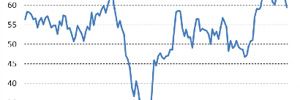
 UK construction companies indicated a strong expansion of business activity in November, but the overall pace of growth moderated for the second month running to its least marked since October 2013.
UK construction companies indicated a strong expansion of business activity in November, but the overall pace of growth moderated for the second month running to its least marked since October 2013.
This was highlighted by a fall in the seasonally adjusted Markit/CIPS UK Construction Purchasing Managers’ Index (PMI) to 59.4 in November, from 61.4 in October. Nonetheless, the headline index has now posted above the neutral 50.0 threshold for 19 months running and the latest reading was stronger than the long-run survey average (54.5).
All three broad areas of construction activity registered softer rates of expansion in November, led by a marked slowdown in civil engineering. The latest expansion of civil engineering activity was the weakest since July 2013. Meanwhile, residential building was the strongest performing area of activity in November. However, house building and commercial construction activity both expanded at the least marked rates since October 2013.
November data pointed to a rise in new business volumes for the 19th successive month. However, the rate of expansion eased to its weakest since June 2013. Reports from survey respondents suggested that strong competition for new work and greater uncertainty about the economic outlook had weighed on client confidence. Despite softer rates of output and new business growth, the latest survey pointed to resilient and strong job creation across the construction sector.
Moreover, the pace of employment growth picked up slightly since the previous month and was still relatively close to the survey-record high seen in July.
Meanwhile, increased workloads contributed to a solid rise in sub-contractor usage in November. Latest data also signalled the fastest rise in sub-contractor charges since the survey began in April 1997.
Average cost burdens continued to rise sharply across the construction sector in November. The overall rate of input price inflation accelerated since the previous month and remained stronger than the long-run survey average. Survey respondents generally commented on strengthening demand for construction materials and pressures on capacity at suppliers. Latest data also pointed to a steep lengthening of vendor delivery times, although the rate of deterioration was the least marked since June 2013.
Looking ahead, construction firms remain (on balance) highly optimistic about the prospects for output growth at their units over the year ahead. Anecdotal evidence highlighted improving underlying demand, strong pipelines of residential building projects and a general rise in new invitations to tender across the UK regions.
,However, the overall degree of optimism eased slightly in November to a 13-month low, with some construction firms citing concerns among clients regarding the wider economic outlook.
Tim Moore, senior economist at Markit and author of the Markit/CIPS Construction PMI, said: “The construction sector remains a strong growth engine within the UK economy, but momentum has undoubtedly cooled since the summer. November’s survey highlights that housing, commercial and civil engineering activity all expanded at the slowest rates for over a year. A less favourable overall economic news flow was cited as the key factor dampening otherwise buoyant demand patterns across the UK construction sector.
“Construction companies responded to rising workloads by boosting their staffing levels at an accelerated pace in November. Moreover, surging demand for skilled construction workers fed through to the steepest increase in sub-contractor charges since the survey began in 1997.



